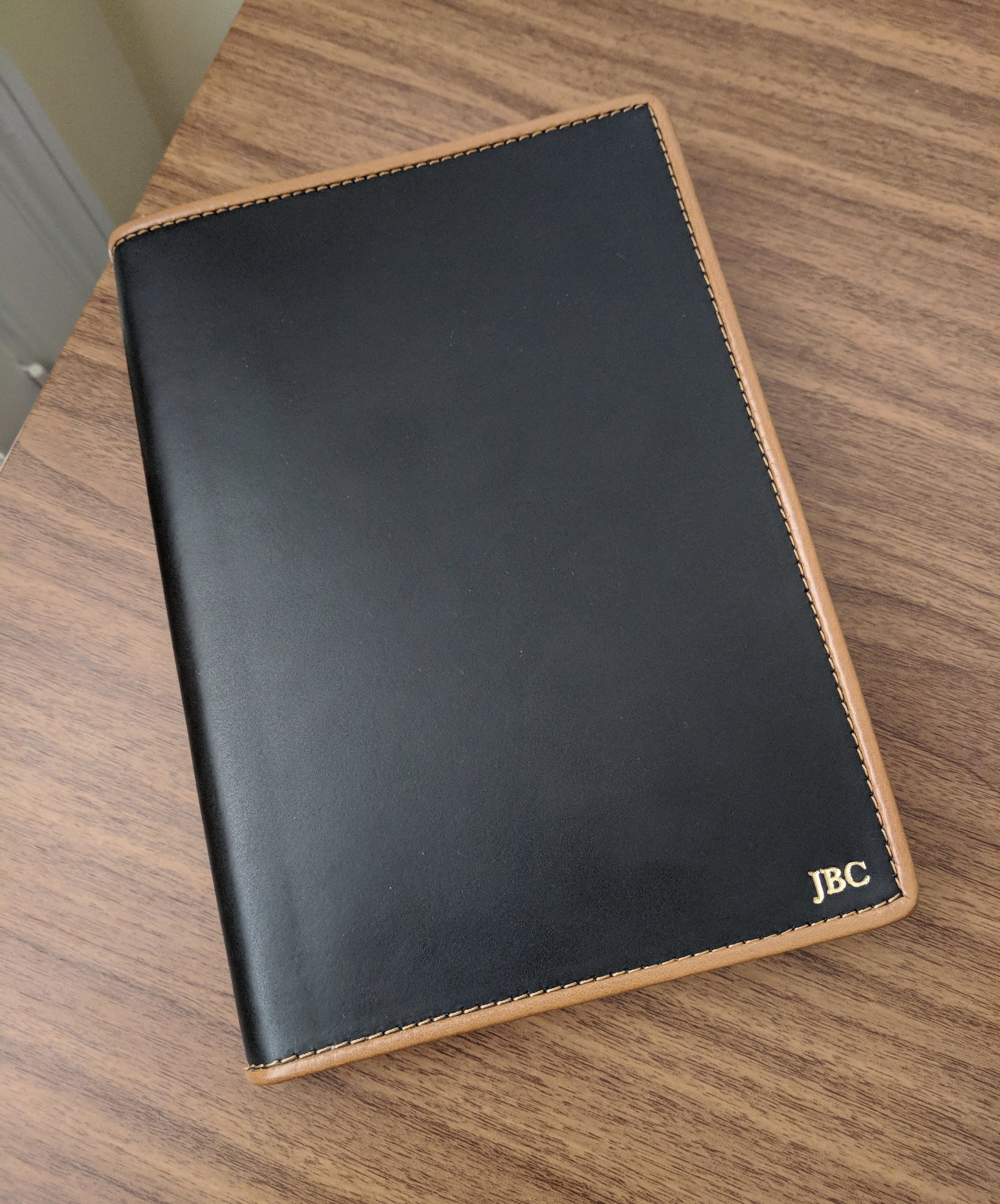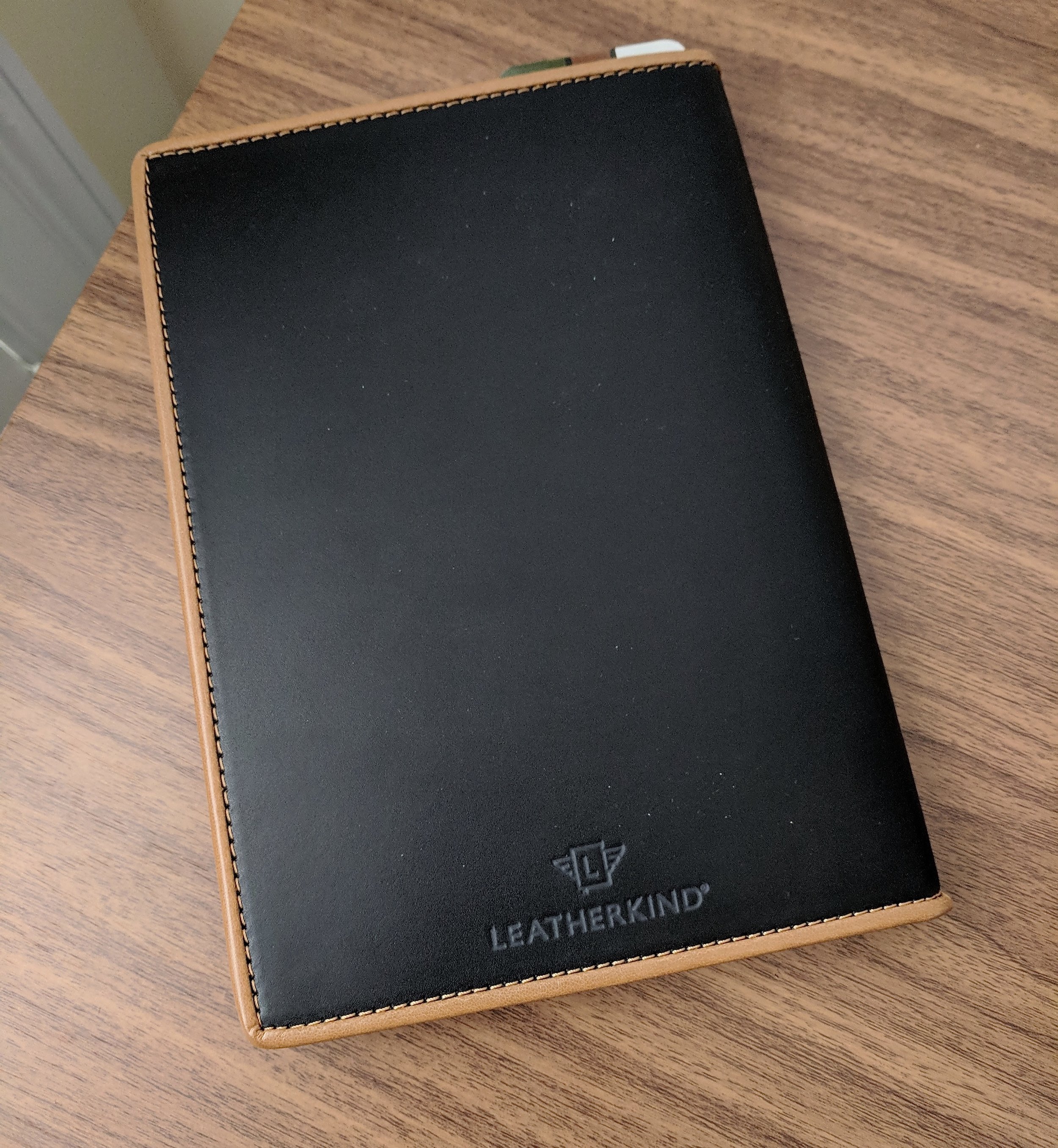In the early years of this blog, I was a huge pocket notebook enthusiast and carried one with me wherever I went. Honestly, for a couple of years pocket notebooks served as my primary note-taking setup, even at work. But as my responsibilities increased, I needed something a bit more versatile (i.e., that contained more pages) to manage multiple projects and an at-times overwhelming number of tasks, and I gradually fell out of the habit of regular pocket carry.
Over the past couple of weeks I’ve spent a lot of time reorganizing my home office setup for what looks like a permanent work-from-home situation, and part of that process has involved going back through stacks of old notebooks, papers, files, etc. and determining what could be thrown away, what needed to be kept or archived, and whether I needed to change anything in my current workflow. As I read through years of old pocket notebooks, what struck me was how easy it was to remember things - even specific days seven or eight years ago - simply by reviewing short to-do lists and other notes I made for myself. Next thing I knew, a couple of hours had passed and I decided that I was going to pick the hobby back up.
2013-2015 were peak “pocket notebook” years for me. I miss having this informal “daily record,” and plan to pick up the practice once again.
Unlike traditional journaling or commonplacing, my pocket notebooks don’t have any set format, and mostly amount to a collection of short lists, reminders, and random stream-of-consciousness jottings. These notebooks essentially serve the same purpose as scratch paper, only I have all of my random musings gathered together in one place as opposed to scattered around my desk on post-its and the backs of old grocery lists. Here I’ve put together a set of links to various pocket notebooks and pocket notebook accessories I’ve used over the years, including many available for purchase in the TGS Curated Shop. Enjoy!
The TGS Patreon Program and sales through The Curated Shop are how I fund The Gentleman Stationer. Your support is greatly appreciated! Any third-party links here are NOT affiliate links and unpaid.
Field Notes Archival Wooden Box. I finally added a Field Notes Archival Box to my personal collection, which let me get these stacks of filled notebooks off my bookshelf and into some discernible order. The set comes with dividers that you can use to organize your collection (I went with organization by years), as well as a Field Notes “band of rubber.”
Field Notes Pocket Notebooks. I carried Field Notes exclusively for years, but as I moved into larger format notebooks, and didn’t use as many, I allowed my subscription to lapse. I’m still working my way through what I’d call a “backlog,” and the unused pocket notebooks pictured in my . That said, if you’re in need of Field Notes, or a new pocket carry enthusiast looking to stock up, I now carry the full line.
Write Notepads Copper Anniversary Edition Pocket Notebooks. For fountain pen enthusiasts who don’t want to carry anything else, it can be hard to find a pocket notebook containing paper that will hold up to any pen or ink you can throw at it. These Write Notepads pocket notebooks will do the trick (plus they still fit in the Field Notes Archival Box).
Lamy Pico Ballpoint Pen (via Vanness Pens). Lamy makes one of my favorite pocket ballpoints of all time, the extendable Lamy Pico. Not only does it have a great refill, but the pen itself is comfortable to write with for extended periods of time - rare for a ballpoint this compact. Read my review here.
Caran D’Ache 849 Ballpoint (via T.G.S. Curated Shop). With Retro 51 supposedly winding down operations later this year, which company will replace Retro as your go-to source for fun, reasonably priced pens that work for most people? Caran D’Ache is certainly trying, having released a steady stream of special editions in their 849 Ballpoint. This pen grows on you, and I personally love the fact that the barrel features a hexagonal shape reminiscent of a woodcase pencil.
Rotring 800 Mechanical Pencil (via Pen Chalet). For those who prefer a mechanical pencil, if you’re looking for pocket carry I’d recommend going with something that features a retractable tip. The Rotring 800 generally takes the same shape and build as the legendary Rotring 600, only the retractable pipe means that you won’t stab yourself in the leg when you sit down. Read my review here.
Retro 51 Tornado Rollerball (via Goldspot). In my experience, liquid ink rollerballs tend to bleed and feather on the same level as fountain pens in pocket notebooks, but if you enjoy quirky limited editions you can’t get much better than the Retro 51 Tornado. The sad news is that Retro 51 is closing up shop by the end of the year. Before then, be sure to check out Goldspot’s exclusive “Pizza” Exclusive Limited Edition!
CW&T Pen Type-B. Looking for the ultimate in high-end pocket carry? Consider adding a CW&T Pen Type-B to your rotation. This deliberately “over-engineered”, indestructible masterpiece of industrial design features Pilot’s Hi-Tec-C needlepoint gel refill, and could almost certainly be the last pen you’d ever need. (Not that it would be. We all know how that works.) Read my review here.
Pokka Pens. Or perhaps you’d prefer a pen that you don’t have to worry about losing. Designed as an easily replaceable version of the Fisher Space Pen “Bullet” Pen, the Pokka sells in packs of three in a wide range of fun colors. I have these scattered all over my house, in my car, and even one on my keychain (look for these new accessories soon).
Schon DSGN “Pocket Six” Fountain Pen (via Schon DSGN). Last but not least, pocket pen impresario Ian Schon has added a fountain pen to his lineup of everyday carry writing instruments. He’s currently offering an “online pen show” of sorts, with the Pocket Six available in a wide range of cool colors. Stay tuned for my review of this epic new addition to my pocket writing arsenal, coming soon.



